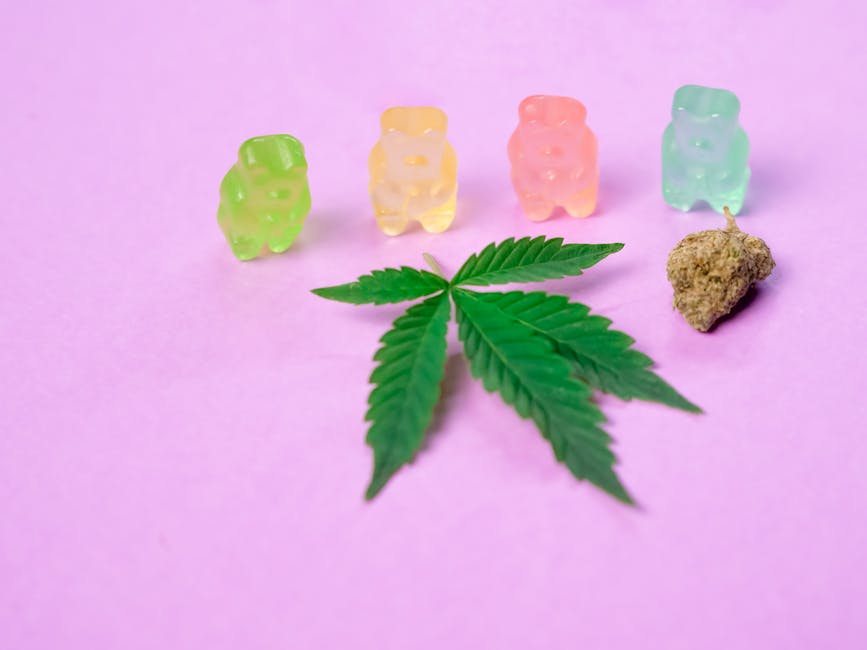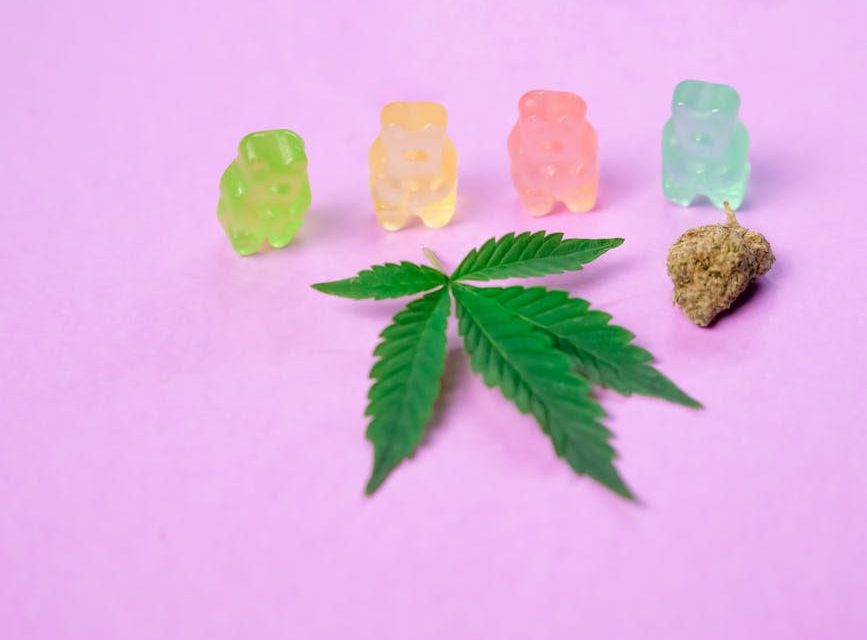Table of Contents
- Introduction
- The Benefits of Thriving in Adversity
- How Skunks Can Teach Us About Personal Branding
- 5 Ways to Bee Successful in Your Career
- The Science Behind Why Skunks Stink
- Bee-ing Mindful: Practices for a Balanced Life
- Thrive in Your Relationships: Tips for Better Communication
- Skunks vs. Bees: A Comparison of Survival Strategies
- The Impact of Environmental Factors on Skunk and Bee Populations
- How to Thrive in a Competitive Market: Lessons from the Hive
- Q&A
- Conclusion
“Thrive with bees, stink with skunks – choose wisely.”
Introduction
Thrive or Stink – Skunks or Bees
Skunks and bees are two very different creatures that often evoke strong reactions from humans. Skunks are known for their distinctive odor and defensive spray, while bees are essential pollinators that play a crucial role in our ecosystem. Despite their differences, both skunks and bees have unique characteristics that allow them to thrive in their respective environments. Let’s explore the fascinating world of skunks and bees and learn more about what makes them so special.
The Benefits of Thriving in Adversity
In the natural world, there are two distinct creatures that have adapted to thrive in adversity: skunks and bees. While these animals may seem like an odd pair to compare, they both offer valuable lessons on how to navigate challenges and come out stronger on the other side.
Skunks are known for their unique defense mechanism – a pungent spray that can deter even the most persistent predators. This ability to protect themselves in the face of danger is a key survival skill that has allowed skunks to thrive in a variety of environments. When faced with adversity, skunks do not back down or run away. Instead, they stand their ground and use their natural defenses to overcome obstacles.
On the other hand, bees are known for their incredible work ethic and cooperation. These social insects work together in highly organized colonies to build intricate hives, gather food, and protect their queen. When faced with challenges such as harsh weather or predators, bees rely on their strong sense of community and teamwork to overcome adversity. By working together, bees are able to accomplish tasks that would be impossible for an individual bee to achieve on its own.
Both skunks and bees offer valuable lessons on how to thrive in adversity. Skunks teach us the importance of standing our ground and using our strengths to overcome challenges. By facing adversity head-on and not backing down, we can develop resilience and confidence in our abilities. Like skunks, we can learn to protect ourselves and navigate difficult situations with grace and determination.
Bees, on the other hand, teach us the power of cooperation and teamwork. By working together with others towards a common goal, we can achieve great things and overcome even the most daunting obstacles. Bees show us that by supporting one another and pooling our resources, we can create a strong and resilient community that can weather any storm.
In our own lives, we can apply the lessons of skunks and bees to thrive in adversity. When faced with challenges, we can draw on our strengths and abilities to overcome obstacles with confidence and determination. By working together with others and supporting one another, we can create a strong network of support that will help us navigate difficult times and emerge stronger on the other side.
Ultimately, the choice to thrive or stink in adversity is up to us. We can choose to approach challenges with the resilience and determination of a skunk, or we can embrace the power of cooperation and teamwork like bees. By learning from the examples of these two creatures, we can develop the skills and mindset needed to thrive in the face of adversity and come out stronger on the other side.
How Skunks Can Teach Us About Personal Branding
Personal branding is a crucial aspect of building a successful career or business. It is how you present yourself to the world, how you differentiate yourself from others, and how you communicate your unique value proposition. In today’s competitive landscape, having a strong personal brand can make all the difference in standing out and attracting opportunities.
When it comes to personal branding, we can learn a lot from skunks and bees. Skunks are known for their distinct black and white stripes and their ability to emit a foul-smelling spray as a defense mechanism. While this may not seem like the most appealing comparison, skunks can teach us a valuable lesson about personal branding – the importance of being memorable and leaving a lasting impression.
Just like skunks, we need to find ways to stand out in a crowded marketplace. This could mean showcasing our unique skills, talents, or experiences that set us apart from others. By being authentic and true to ourselves, we can create a personal brand that is both memorable and impactful.
On the other hand, bees are known for their hard work, teamwork, and efficiency. They work together to build intricate hives, collect nectar, and pollinate flowers. Bees can teach us about the power of collaboration, consistency, and dedication in building a strong personal brand.
By working together with others, sharing knowledge and resources, and supporting each other’s growth, we can create a network of like-minded individuals who can help us achieve our personal branding goals. Consistency is also key – just like bees diligently collect nectar every day, we need to consistently show up, deliver value, and communicate our brand message to our target audience.
Furthermore, bees are known for their efficiency in pollinating flowers and producing honey. This can teach us about the importance of being productive, focused, and results-driven in our personal branding efforts. By setting clear goals, prioritizing tasks, and measuring our progress, we can ensure that we are making the most of our time and resources to build a strong personal brand.
In conclusion, skunks and bees can teach us valuable lessons about personal branding. Skunks remind us to be memorable, authentic, and unique in how we present ourselves to the world. Bees teach us about the power of collaboration, consistency, and efficiency in building a strong personal brand.
By incorporating these lessons into our personal branding strategy, we can create a brand that not only stands out in a crowded marketplace but also resonates with our target audience and attracts opportunities for growth and success. So, the next time you think about your personal brand, ask yourself – are you thriving like a bee or stinking like a skunk?
5 Ways to Bee Successful in Your Career
In the world of career success, there are two distinct paths one can take – the skunk path or the bee path. Skunks are known for their defensive nature, spraying a foul odor when threatened. On the other hand, bees are known for their hard work, teamwork, and productivity. In this article, we will explore five ways to bee successful in your career and avoid the stinky path of the skunk.
First and foremost, bees are known for their strong work ethic. They tirelessly gather nectar and pollen to support their hive. In the same way, successful professionals dedicate themselves to their work, putting in the time and effort needed to excel in their field. This means showing up on time, meeting deadlines, and going above and beyond what is expected. By demonstrating a strong work ethic, you will earn the respect of your colleagues and superiors, paving the way for career advancement.
Secondly, bees are excellent team players. They work together to achieve a common goal – the survival of the hive. In the workplace, collaboration is key to success. By working well with others, sharing ideas, and supporting your team members, you will create a positive work environment that fosters creativity and innovation. Remember, no one achieves success alone. By building strong relationships with your colleagues, you will have a network of support to help you navigate the challenges of your career.
Thirdly, bees are highly organized creatures. They have a clear division of labor within the hive, with each bee knowing their role and responsibilities. In your career, it is important to stay organized and prioritize your tasks. Create to-do lists, set goals, and manage your time effectively. By staying organized, you will be able to focus on what is most important and avoid getting overwhelmed by the demands of your job.
Furthermore, bees are resilient creatures. They face many challenges, from harsh weather conditions to predators, yet they continue to thrive. In your career, you will undoubtedly encounter setbacks and obstacles. It is important to approach these challenges with a positive attitude and a willingness to learn and grow. By staying resilient in the face of adversity, you will demonstrate your ability to overcome obstacles and adapt to change, qualities that are highly valued in the workplace.
Lastly, bees are known for their productivity. They work efficiently and effectively to maximize their output. In your career, it is important to be productive and make the most of your time and resources. Set clear goals, prioritize your tasks, and eliminate distractions that may hinder your productivity. By focusing on your work and staying committed to achieving your goals, you will be able to make significant progress in your career.
In conclusion, by following the example of bees – with their strong work ethic, teamwork, organization, resilience, and productivity – you can bee successful in your career and avoid the stinky path of the skunk. Remember, success is not achieved overnight. It takes dedication, hard work, and a willingness to learn and grow. By embodying the qualities of the bee, you will be well on your way to achieving your career goals and thriving in your chosen field.
The Science Behind Why Skunks Stink

Skunks are known for their distinctive odor, which can be quite overpowering and unpleasant. But have you ever wondered why skunks stink? The answer lies in the science behind their unique defense mechanism.
Skunks produce a foul-smelling liquid from their anal glands when they feel threatened. This liquid contains sulfur compounds, which are responsible for the skunk’s offensive odor. The main sulfur compound found in skunk spray is called thiol, which has a strong, pungent smell that can linger for days.
Thiols are also found in other smelly substances, such as garlic and onions. However, skunk spray contains a much higher concentration of thiols, making it much more potent and difficult to remove. This is why the smell of skunk spray can be so overwhelming and persistent.
When a skunk feels threatened, it will arch its back, raise its tail, and release a spray of liquid from its anal glands. This spray can reach distances of up to 10 feet, allowing the skunk to defend itself from predators without having to come into direct contact with them.
Skunk spray is not only smelly but also irritating to the eyes and respiratory system. This is because the sulfur compounds in the spray can cause irritation and inflammation when they come into contact with mucous membranes. In some cases, exposure to skunk spray can even cause temporary blindness or difficulty breathing.
Despite its unpleasant odor, skunk spray serves an important purpose in nature. By releasing their foul-smelling liquid, skunks are able to deter predators and protect themselves from harm. This defense mechanism has evolved over time to help skunks survive in the wild and avoid becoming prey.
In contrast to skunks, bees have a very different way of defending themselves. When a bee feels threatened, it will sting its attacker with its stinger, injecting venom into the skin. This venom can cause pain, swelling, and in some cases, allergic reactions in humans.
Unlike skunk spray, bee venom does not contain sulfur compounds and does not have a strong odor. However, it can still be quite painful and dangerous, especially for those who are allergic to bee stings. In some cases, a bee sting can even be life-threatening if not treated promptly.
Both skunks and bees have evolved unique defense mechanisms to protect themselves from harm. While skunks rely on their foul-smelling spray to deter predators, bees use their stingers to defend their hives and themselves. These defense mechanisms have helped both species survive and thrive in their respective environments.
In conclusion, the science behind why skunks stink lies in the sulfur compounds found in their spray. This foul-smelling liquid serves as a powerful defense mechanism, allowing skunks to protect themselves from predators and avoid becoming prey. While skunk spray may be unpleasant to humans, it plays a crucial role in the survival of these fascinating creatures in the wild.
Bee-ing Mindful: Practices for a Balanced Life
In the natural world, there are many creatures that serve as metaphors for how we can live our lives. Two such creatures are skunks and bees. Skunks are known for their strong odor and defensive nature, while bees are known for their industriousness and ability to work together for the greater good of the hive. When it comes to thriving in life, we can learn a lot from these two animals.
Skunks are solitary creatures that rely on their strong odor to ward off predators. They are known for their defensive nature and can be quite aggressive when threatened. In contrast, bees are social insects that work together in a highly organized manner to ensure the survival of the hive. They are known for their industriousness and ability to work tirelessly for the greater good.
When we think about how we want to live our lives, we can ask ourselves whether we want to be like skunks or bees. Do we want to be defensive and aggressive, relying on our own strength to survive? Or do we want to be cooperative and industrious, working together with others to achieve common goals?
Research has shown that people who adopt a more bee-like approach to life tend to be happier and more successful. By working together with others, we can achieve more than we ever could on our own. When we collaborate with others, we can tap into a wealth of knowledge and resources that can help us reach our goals more quickly and effectively.
One way to adopt a more bee-like approach to life is to practice mindfulness. Mindfulness is the practice of being fully present in the moment, without judgment or distraction. By cultivating mindfulness, we can become more aware of our thoughts and emotions, and better able to respond to them in a calm and rational manner.
Another way to adopt a more bee-like approach to life is to cultivate a sense of gratitude. Gratitude is the practice of acknowledging and appreciating the good things in our lives, no matter how small. By focusing on the positive aspects of our lives, we can cultivate a sense of abundance and contentment that can help us thrive in the face of adversity.
In addition to mindfulness and gratitude, it is important to cultivate a sense of purpose in our lives. Having a clear sense of purpose can give us direction and motivation, and help us stay focused on our goals. When we have a sense of purpose, we are more likely to persevere in the face of challenges and setbacks, and less likely to be deterred by obstacles.
Ultimately, whether we choose to be like skunks or bees is up to us. We can choose to be defensive and aggressive, or we can choose to be cooperative and industrious. By adopting a more bee-like approach to life, we can cultivate mindfulness, gratitude, and purpose, and thrive in all areas of our lives. So, the next time you find yourself faced with a challenge, ask yourself: am I going to thrive like a bee, or stink like a skunk?
Thrive in Your Relationships: Tips for Better Communication
Communication is a vital component of any relationship, whether it be with a partner, family member, friend, or colleague. Effective communication can lead to stronger connections, increased trust, and a deeper understanding of one another. On the other hand, poor communication can lead to misunderstandings, conflict, and ultimately, the deterioration of the relationship. In this article, we will explore some tips for better communication to help you thrive in your relationships.
One of the most important aspects of effective communication is active listening. This means fully engaging with the person speaking, giving them your full attention, and truly trying to understand their perspective. Instead of thinking about what you will say next, focus on what the other person is saying. This can help prevent misunderstandings and show the other person that you value their thoughts and feelings.
Another key tip for better communication is to be mindful of your body language. Nonverbal cues such as facial expressions, gestures, and posture can convey a lot of information to the other person. Make sure your body language is open and welcoming, and try to maintain eye contact to show that you are engaged in the conversation. Avoid crossing your arms or looking away, as this can signal defensiveness or disinterest.
It is also important to be clear and concise in your communication. Avoid using vague or ambiguous language that can lead to confusion. Instead, be direct and to the point, and make sure your message is easy to understand. If necessary, ask for clarification or feedback to ensure that you are on the same page.
In addition to being clear, it is important to be respectful in your communication. Treat the other person with kindness and empathy, even if you disagree with their point of view. Avoid using harsh language or raising your voice, as this can escalate the situation and lead to further conflict. Remember that communication is a two-way street, and both parties should feel heard and respected.
One of the most effective ways to improve communication in your relationships is to practice empathy. Put yourself in the other person’s shoes and try to understand their feelings and perspective. This can help you respond in a more compassionate and understanding way, leading to a deeper connection and stronger bond.
Finally, it is important to be willing to compromise and find common ground in your communication. Not every disagreement needs to be a battle, and sometimes finding a middle ground can lead to a more harmonious relationship. Be open to feedback and willing to make changes to improve the communication in your relationships.
In conclusion, effective communication is essential for thriving in your relationships. By practicing active listening, being mindful of your body language, being clear and respectful, practicing empathy, and being willing to compromise, you can improve the quality of your communication and strengthen your connections with others. Remember that communication is a skill that can be developed and improved over time, so keep practicing and striving to be a better communicator in all areas of your life.
Skunks vs. Bees: A Comparison of Survival Strategies
When it comes to survival in the animal kingdom, different species have developed unique strategies to thrive in their environments. Two such examples are skunks and bees, which have evolved distinct approaches to ensure their survival. While skunks rely on their potent spray as a defense mechanism, bees work together in highly organized colonies to protect their queen and ensure the survival of the hive. In this article, we will explore the contrasting survival strategies of skunks and bees and examine how these strategies have allowed each species to thrive in their respective habitats.
Skunks are known for their distinctive black and white coloring and their ability to spray a foul-smelling liquid as a defense mechanism. This spray, which is produced by glands located near the skunk’s anus, can be accurately aimed at predators up to 10 feet away. The odor of the spray is so strong that it can cause temporary blindness and nausea in animals that come into contact with it. Skunks use this potent weapon to deter predators and protect themselves from harm.
In contrast, bees rely on their highly organized social structure to ensure their survival. A bee colony consists of a queen, who is responsible for laying eggs, worker bees, who gather nectar and pollen, and drones, who mate with the queen. Each bee has a specific role within the colony, and they work together to protect the hive from predators and ensure the survival of the queen. Bees communicate through complex dances and pheromones, allowing them to coordinate their activities and respond quickly to threats.
While skunks and bees have very different survival strategies, both species have been able to thrive in their environments. Skunks are solitary animals that are primarily nocturnal, allowing them to avoid predators and hunt for food under the cover of darkness. Their potent spray serves as a powerful deterrent against predators, giving them a strong defense mechanism to rely on. Skunks are also opportunistic feeders, consuming a wide variety of foods, including insects, small mammals, and fruits.
Bees, on the other hand, rely on their highly organized social structure to ensure their survival. The queen bee is the heart of the colony, laying up to 2,000 eggs per day to ensure the continued growth of the hive. Worker bees gather nectar and pollen from flowers, which they use to feed the colony and produce honey. Drones mate with the queen to ensure the genetic diversity of the hive. Bees work together to defend the hive from predators, with worker bees stinging intruders to protect the queen and the rest of the colony.
In conclusion, skunks and bees have evolved distinct survival strategies that have allowed them to thrive in their respective habitats. Skunks rely on their potent spray as a defense mechanism, while bees work together in highly organized colonies to protect their queen and ensure the survival of the hive. Both species have been able to adapt to their environments and successfully navigate the challenges they face. Whether you prefer the solitary and defensive skunk or the social and cooperative bee, it is clear that both species have found ways to thrive in the wild.
The Impact of Environmental Factors on Skunk and Bee Populations
Skunks and bees are two very different creatures that play important roles in the ecosystem. Skunks are known for their distinctive black and white coloring and their ability to spray a foul-smelling liquid as a defense mechanism. Bees, on the other hand, are known for their role in pollination and honey production. Despite their differences, both skunks and bees are impacted by environmental factors that can either help them thrive or cause their populations to decline.
One of the key environmental factors that can impact skunk populations is habitat loss. Skunks are adaptable creatures that can be found in a variety of habitats, including forests, grasslands, and urban areas. However, as human development continues to encroach on natural habitats, skunks are losing the places where they can find food and shelter. This can lead to a decline in skunk populations as they struggle to find suitable habitats in which to live and raise their young.
In contrast, bees are also impacted by habitat loss, but in a different way. Bees rely on a diverse range of plants for food, and as natural habitats are destroyed, bees can struggle to find the nectar and pollen they need to survive. This can lead to declines in bee populations, which can have far-reaching consequences for ecosystems and agriculture. Without bees to pollinate plants, many crops would not be able to produce fruit or seeds, leading to food shortages and ecosystem imbalances.
Another environmental factor that can impact skunk and bee populations is pollution. Skunks are particularly sensitive to pollution, as their sense of smell is one of their primary defenses against predators. Pollution can disrupt skunks’ ability to detect danger, making them more vulnerable to predation. In addition, pollution can also contaminate the food and water sources that skunks rely on, leading to declines in their populations.
Bees are also impacted by pollution, particularly pesticides. Pesticides are chemicals that are used to kill pests, but they can also harm beneficial insects like bees. When bees come into contact with pesticides, it can affect their ability to forage for food, navigate back to their hives, and even reproduce. This can lead to declines in bee populations and have negative impacts on ecosystems and agriculture.
Climate change is another environmental factor that can impact skunk and bee populations. Skunks are adapted to a wide range of climates, but they can struggle to cope with extreme weather events like droughts, floods, and wildfires. These events can destroy skunks’ habitats and food sources, leading to declines in their populations. Bees are also impacted by climate change, as shifts in temperature and precipitation patterns can disrupt the timing of flowering plants, making it harder for bees to find food. This can lead to declines in bee populations and have negative impacts on ecosystems and agriculture.
In conclusion, skunks and bees are both important creatures that play vital roles in the ecosystem. However, they are both impacted by environmental factors that can either help them thrive or cause their populations to decline. Habitat loss, pollution, and climate change are just a few of the factors that can impact skunk and bee populations, highlighting the need for conservation efforts to protect these valuable species. By understanding and addressing these environmental factors, we can help ensure that skunks and bees continue to thrive in their natural habitats.
How to Thrive in a Competitive Market: Lessons from the Hive
In the world of business, competition is fierce. Companies are constantly vying for customers’ attention and trying to outdo one another in order to thrive in a crowded marketplace. Just like in nature, where animals must compete for resources to survive, businesses must also adapt and evolve in order to succeed. In this article, we will explore the lessons that can be learned from two very different creatures – skunks and bees – and how their strategies can be applied to thriving in a competitive market.
Let’s start with the skunk. Skunks are known for their distinctive odor, which they use as a defense mechanism against predators. In the business world, this can be likened to companies that rely on gimmicky marketing tactics or flashy advertising to attract customers. While these strategies may initially grab attention, they often fail to create long-term loyalty or sustain growth. Just like the skunk’s odor, these tactics can leave a bad impression and drive customers away.
On the other hand, bees are known for their hard work, cooperation, and efficiency. Bees work together in a hive, each playing a specific role to ensure the success of the colony. In the business world, this can be likened to companies that focus on building strong relationships with customers, providing high-quality products or services, and fostering a culture of collaboration and teamwork within the organization. Just like bees working together to pollinate flowers and produce honey, businesses that prioritize these values are more likely to thrive in a competitive market.
One key lesson that can be learned from bees is the importance of specialization. Each bee in a hive has a specific role to play, whether it be gathering nectar, building the hive, or caring for the young. By focusing on their individual strengths and working together towards a common goal, bees are able to maximize efficiency and productivity. In the business world, companies can apply this lesson by identifying their core competencies and focusing on what they do best. By specializing in a particular niche or area of expertise, businesses can differentiate themselves from competitors and attract customers who value their unique offerings.
Another lesson that can be learned from bees is the importance of communication and collaboration. Bees communicate with one another through intricate dances and pheromones, allowing them to coordinate their efforts and work together towards a common goal. In the business world, effective communication and collaboration are essential for building strong relationships with customers, suppliers, and employees. By fostering a culture of open communication and teamwork within the organization, businesses can create a sense of unity and purpose that drives success in a competitive market.
In conclusion, the lessons that can be learned from skunks and bees offer valuable insights for businesses looking to thrive in a competitive market. While skunks may rely on gimmicky tactics to attract attention, bees demonstrate the power of hard work, cooperation, and specialization in achieving long-term success. By focusing on building strong relationships, providing high-quality products or services, and fostering a culture of collaboration and teamwork, businesses can create a sustainable advantage that sets them apart from competitors. Just like bees working together in a hive, companies that embrace these values are more likely to thrive and prosper in a crowded marketplace.
Q&A
1. Are skunks known for their strong odor?
Yes, skunks are known for their strong odor.
2. Do bees play a crucial role in pollination?
Yes, bees play a crucial role in pollination.
3. Can skunks spray their odor as a defense mechanism?
Yes, skunks can spray their odor as a defense mechanism.
4. Do bees live in colonies and work together to build hives?
Yes, bees live in colonies and work together to build hives.
5. Are skunks primarily nocturnal animals?
Yes, skunks are primarily nocturnal animals.
6. Do bees produce honey as a food source for their colony?
Yes, bees produce honey as a food source for their colony.
7. Are skunks omnivores, feeding on both plants and animals?
Yes, skunks are omnivores, feeding on both plants and animals.
8. Do bees communicate with each other through dance-like movements?
Yes, bees communicate with each other through dance-like movements.
9. Can skunks be found in a variety of habitats, including forests, fields, and urban areas?
Yes, skunks can be found in a variety of habitats, including forests, fields, and urban areas.
Conclusion
In conclusion, both skunks and bees play important roles in their respective ecosystems. Skunks help control insect populations and bees are crucial pollinators for many plants. While skunks may have a reputation for their odor, both species are vital to the balance of nature.





